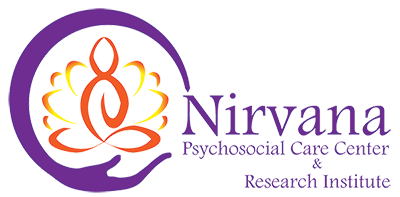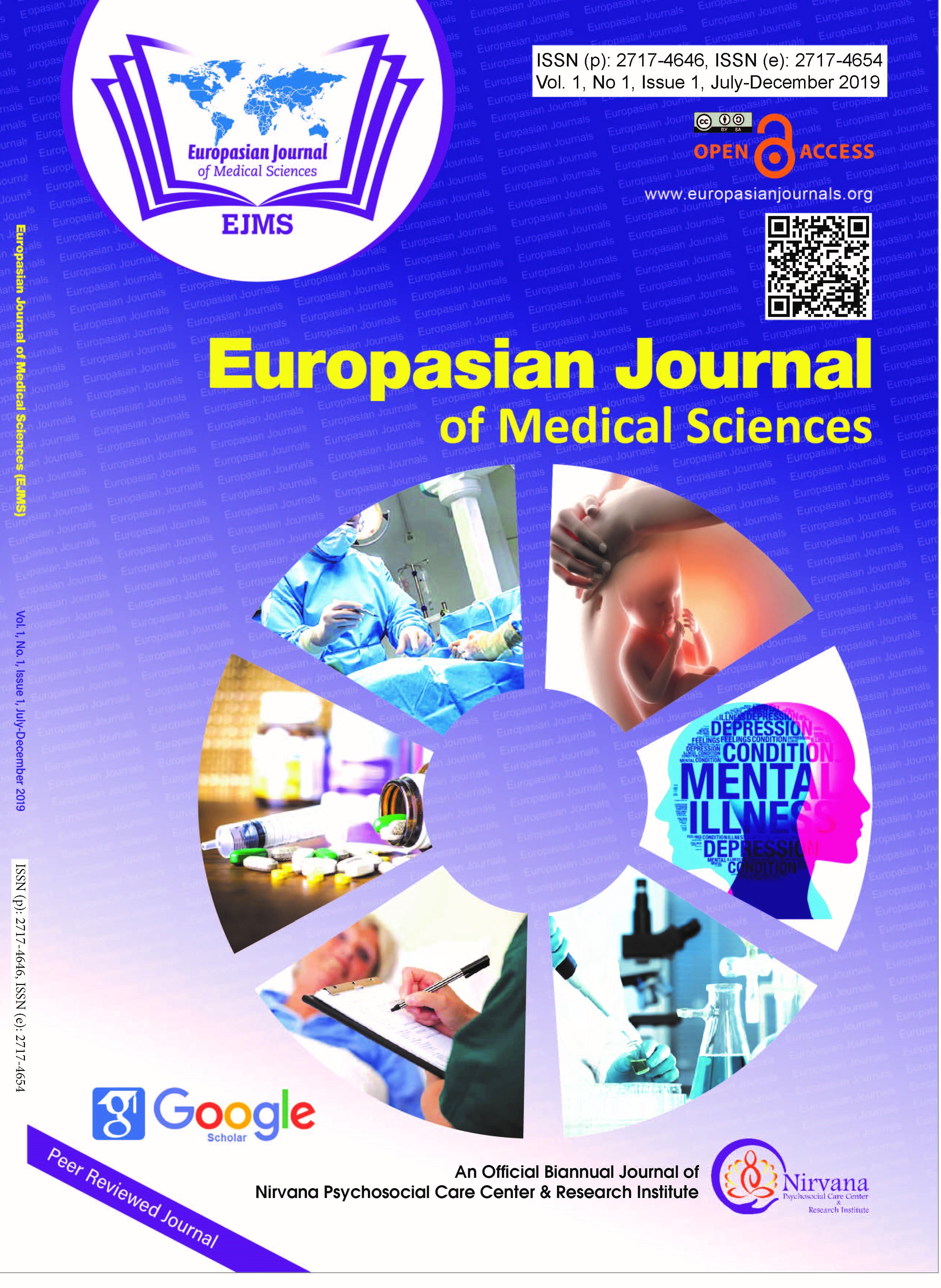Prevalence and Associated Factors of Neonatal Hypothermia within Six Hours of Birth among Newborns in Pokhara
Abstract
Background: Hypothermia is an important cause of neonatal morbidity and mortality. Persistent hypothermia leads to cold injury that results edema, scleroderma, pulmonary hemorrhage, jaundice and death. The objective of this study was to identify the prevalence and associated factors of neonatal hypothermia among newborns within six hours of Birth in Pokhara.
Methods: The institutional based quantitative descriptive cross sectional study was done among 402 systematic randomly selected respondents by using structured format and digital thermometer MT 100 after taking ethical approval from Nepal Health Research Council and Pokhara Academy of Health Sciences. Data was analyzed by using SPSS version 20. Multivariate logistic regression analysis was done for the variables (p<0.25) in bivariate analysis. The variables (p< 0.05) with Adjusted Odds ratio (AOR) at 95% CI in the multivariate logistic regression was considered as independent associated variables.
Results: The prevalence of neonatal hypothermia in the study area was about 43 percent. The significant independent factors of neonatal hypothermia were maternal age after 35 years (p=0.03, AOR: 4.087, 95% CI: 1.12-14.97), inadequate antenatal care (p=0.03, AOR: 0.52, 95% CI: 0.29-0.94), low birth weight (p=0.00, AOR: 0.433, 95% CI: 0.24- 0.77) and resuscitated babies at birth (p =0.00, AOR: 3.808)95% CI: 1.69- 4.65).
Conclusion: Out of 10 births, four babies were hypothermic in study site. Mother’s age more than 35 years, inadequate antenatal care, low birth weight and resuscitation at birth were associated factors of Neonatal hypothermia. So, special care is necessary for low birth weight babies and during resuscitation.
References
Department of Health Service, Nepal. Community- based integrated management of neonatal and childhood illness: Training manual for health workers; 2071(Rev. 2073).WHO G. Thermal protection of the newborn: a practical guide. Maternal and safe motherhood unit; 2006.
Sodemann M, Nielsen J, Veirum J, Jakobsen MS, Biai S, Aaby P: Hypothermia of newborns is associated with excess mortality in the first 2 months of life in Guinea-Bissau, West Africa. Trop Med Int Health 2008, 13:980. https://doi.org/10.1111/j.1365-3156.2008.02113.x
Ogunlesi TA, Ogunfowora OB, Adekanmbi FA, Fetuga BM, Olanrewaju DM: Point-of-admission hypothermia among high-risk Nigerian newborns. BMC Pediatr 2008, 8:40. doi: 10.1186/1471-2431-8-40.
LeBlanc MH.The physical environment. In: Fanaroff A, Martin RJ, eds.Neonatal-perinatal medicine, 7th ed.Volume 1.St Louis, Missouri, Mosby, 2002:512-24
Onalo.R. Neonatal hypothermia in sub-Saharan Africa : a review Niger J Clin. Pract ; 2013;2(16). https://doi.org/10.4103/1119-3077.110120
Carlo W. The newborn infant. In: Kliegman R, Stanton B, School N, Geme J, Behrman R, editors. Nelson Textbook of Pediatrics. 19th edition ed. Philadelphia: Elsevier Saunders; 2011. p. 538–40
Demissie BW, Abera BB, Chichiabellu TY. Astawesegn FH. Neonatal hypothermia and associated factors among neonates admitted to neonatal intensive care unit of public hospitals in Addis Ababa, Ethiopia. BMC Pediatrics (2018) 18:263 [BMC]
Gordon A, Fletcher M, MacDonald G. Neonatology, Pathophysiology and Management of the Newborn. Philadelphia: Lippincot Williams & Wilkins; 1999.
Alebachew Bayih W, Assefa N, Dheresa, M. et al. Neonatal hypothermia and associated factors within six hours of delivery in eastern part of Ethiopia: a cross-sectional study. BMC Pediatr 2019; 19: 252. [BMC]
Guha DK, Dadhich J. Temperature control in newborn. In: Guha DK, editors. Neonatology: Principles and Practice 2nd ed. New Delhi JP Brothers Medical Publishers; 1998. p. 253–61.
Akter S, Parvin R, Yasmeen BHN. Admission hypothermia among neonates presented to neonatal intensive care unit. J Nepal Paediatr Soc. 2013;33 (3):166–71. https://doi.org/10.3126/jnps.v33i3.8312
Seyum T, Ebrahim E. Proportion of neonatal hypothermia and associated factors among newborns at Gondar University teaching and Refferal hospital, Northwest Ethiopia: a hospital based cross sectional study. Gen Med. 2015;03(04):1–7. http://dx.doi.org/10.4172/2327-5146.1000198
Ukke GG, Diriba K (2019) Prevalence and factors associated with neonatal hypothermia on admission to neonatal intensive care units in Southwest Ethiopia – A cross-sectional study. PLoS ONE 14(6): e0218020. https://doi.org/10.1371/journal.pone.0218020.
Yitayew YA, Aitaye EB, Lechissa HW, Gebeyehu LO. Neonatal Hypothermia and Associated Factors among Newborns Admitted in the Neonatal Intensive Care Unit of Dessie Referral Hospital, Amhara Region, Northeast Ethiopia. International Journal of Pediatrics. 2020; 20. https://doi.org/10.1155/2020/3013427
Yitayew YA, Aitaye EB, Lechissa HW, Gebeyehu LO. Neonatal Hypothermia and Associated Factors among Newborns Admitted in the Neonatal Intensive Care Unit of Dessie Referral Hospital, Amhara Region, Northeast Ethiopia. International Journal of Pediatrics. 2020; 20 . https://doi.org/10.1155/2020/3013427
Delavar MA, Akbarianrad Z , Mansouri MM , Yahyapour M. Neonatal Hypothermia and Associated Risk Factors at Baby Friendly Hospital in Babol, Iran. Annals of Medical and Health Sciences Research. 2014 Jul-Aug ; 4 ( 2) S99–S103. https://doi.org/10.4103/2141-9248.13802
Shrestha SD. Incidence of neonatal hypothermia and its association with low birth weight, preterm delivery, APGAR score and nursing care. Journal of Patan Academy of Health Sciences. 2019Dec;6(2):75-80. https://jpahs.edu.np/index.php/jpahs/article/view/274
Copyright (c) 2020 Author(s)

This work is licensed under a Creative Commons Attribution 4.0 International License.
The author(s) retain the ownership of the copyrights for their work published in EJMS without any restrictions. Upon submission, the author(s) grants EJMS a license to publish, including to display, store, copy, and reuse the published content.
License to Publish
By submitting a manuscript to EJMS, the author(s) grant the journal a non-exclusive license to:
- Publish and distribute the content in all formats, media, and platforms (both existing and future), while identifying EJMS as the original publisher.
- Reproduce, display, and store the content in both print and online formats, including institutional and digital repositories.
- Translate, adapt, and summarize the work, including reprints, extracts, and abstracts.
- Develop derivative works based on the original content.
- Include the work in electronic databases and provide links to third-party materials.
Creative Commons Licensing
In addition to EJMS’s publishing rights, authors grant third parties the right to use, share, and distribute their work under the Creative Commons Attribution 4.0 (CC BY 4.0) International License. This allows unrestricted use of the content, provided proper attribution is given to the original author(s) and the journal.



